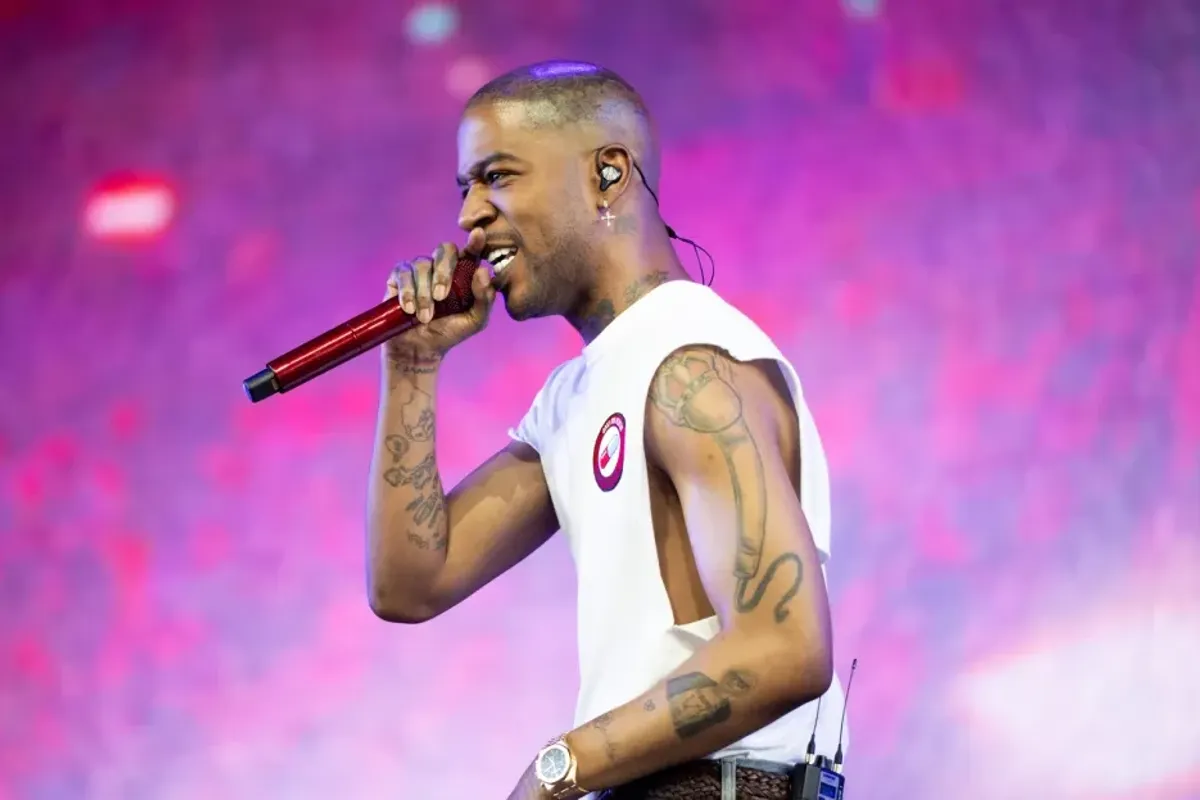
By David Farrell
What Was Said – Prisoners of Pop Culture
There seems to be consensus these days that advertising on the whole is pretty stinky. There are all kinds of explanations for this. I have my own theory.
I believe that advertising has become tethered to youth culture in a way that is undermining imaginative thinking, harming our creative output, and seriously limiting marketing effectiveness.
Pop culture and fashion have always been stupid. If you want to die an imbecile, don't pay attention to art, literature, history, science, or nature. Pay attention to Kardashians.
After World War II something new arrived in the U.S. -- the "teenager." Previously, in all of history, there was no such thing. There were just young people who went out in the fields or down in the mines or over to the factories and worked their asses off. Overwhelmingly, the fruits of their labors and the imperatives of their lives were focused on the relentless struggle to help keep their families alive. It was a brutally hard existence.
That changed over time. In the 1950s and '60s, unprecedented prosperity and affluence arrived and the "teenager" was born. A teenager was a young person who had what no other young person in history ever had -- money and time.
With the teenager came something else that was completely new -- youth culture. At first it was just music and language. But then a whole set of customs and values evolved including fashion, celebrities, attitudes, economics and imagery.
Coincidental with the rise of pop culture was the rise of the "creative revolution" in advertising. In the beginning, advertising didn't have much use for pop culture. Have a look at the great ads from the early period of the "creative revolution" (VW, Alka-Seltzer, etc.) and you'll see the ads were about products not "lifestyles," the actors were grown-ups, and youth iconography didn't exist.
Slowly but surely youth culture worked its way into the advertising lexicon. At first it was thrilling. People were tickled to hear their favorite types of music and see young people like them in ads. What made it exciting was that it was new and different.
What has changed is that pop iconography is no longer the exception in advertising. It is now by far the dominant tool in the toolbox. Pop culture is no stupider today than it was 50 years ago, it is just more pervasive.
And that's a problem. As wealth and economic power have been hugely concentrated in the hands of mature people, youth culture rarely interests or engages the people who have and spend most of the money. In fact, it is often off-putting. But it has become the default language of advertising despite the fact that it is not the language of the people who drive our economy or dominate our commerce.
Worse, it is self-perpetuating. The more that marketing people see youth-orientation dominate advertising the more they unconsciously assume that it is the proper voice for advertising and that they better employ it, too.
As a result, much of advertising has become a tiresome, one-note exercise in celebrity/music/technology banality. It creates a false feedback signal to marketers and the business community that pop culture/youth sensibility is the correct vocabulary for marketing.
There is nothing wrong with the use of celebrities or cultural trends in advertising so long as they are not used as a shallow substitute for an idea. Once, a small percent of advertising leaned on pop culture as a replacement for strategy. Today that number is much higher. The pop iconography of music/celebrities/technology is everywhere and the discipline of brand differentiation is largely missing in action.
We are tethered to youth culture in a way that is harmful to our goals and to business. The attribute most noticeable in creative work is not imaginative thinking, it's the slavish conformity to whatever's trending. As usual, our obsessions have undermined our perspective.
One of the pernicious side-effects of this is our inability and, in fact, our blind refusal to speak to the people who have and spend most of the money in our economy. As a recent research paper from the UK said about our industry...
"...we, like everyone else, prefer to talk to people we are familiar with and understand. Witness the industry’s continued fixation with targeting 18-34... which is surely driven more by the composition of our industry than the demographic reality of our aging population and the massive concentration of wealth and spending."
The auto industry, which is one of the largest categories of advertised goods, provides an excellent example. While car makers often feature young adults in their ads, adults under 25 comprise less than 1% of new car buyers. In the past 5 years, car ownership among 18-34 year olds has dropped 30%. Meanwhile, about 75% of new car buyers are over 40.
There are two reasons advertising agencies default to youth imagery. First, the people in agencies are overwhelmingly young and don't have the cultural vocabulary to speak comfortably to mature people. Look in any coffee shop and try to find someone in his 20's talking to someone in her 50's. I mean, other than saying, "Can I take your order?" When the people writing the ads are disconnected from the people buying the products, there is a problem. And while only 6% of agency employees are over 50, 57% of new car buyers are over 50, and 51% of all consumer spending is done by people over 50.
Second, binding to youth culture is such an easy and attractive way to seem relevant. Particularly if you have been seduced by advertising's feedback loop and don't understand the limited role young people actually play in our economy.
There is a lazy, unimaginative way to do advertising, and a difficult, inspired way. The lazy way has been the same for decades -- find a pop song or celebrity and borrow some glow. The difficult, inspired way is to untether yourself from the banality of trendiness and search for something interesting to say. – Bob Hoffman, The Ad Contrarian
First Indigenous woman CRTC commissioner appointed
Claire Anderson has been appointed CRTC commissioner for British Columbia and Yukon, becoming the first Indigenous woman and Yukon resident to sit on the commission and only the second Indigenous appointee since 1968. Her five-year term will begin Aug. 26. – Connie Thiessen, Broadcast Dialogue
Ottawa’s approach to supporting charitable media foundations is uncharitable – and self-defeating
When the federal government released details about its plan to assist media organizations with a five-year, $595-million package of tax credits, we were shocked. While media organizations are allowed to apply for charitable status to receive donations and issue tax receipts to donors, as of right now, only non-profits that produce original content will be allowed to issue such receipts. That means foundations and non-profit organizations, such as Les amis du Devoir (The Friends of Le Devoir), would be excluded from such benefits.
The list of winners across Canada in this unfair lottery can be counted on the fingers of one hand. How could Minister of Canadian Heritage and Multiculturalism Pablo Rodriguez accept the exclusions? –
Bryan Myles and Andre Ryan, The Globe and Mail (subscription)
‘Intrepid reporter’ George Garrett reflects on CKNW’s 75-year history
Former CKNW reporter George Garrett earned the title of “intrepid reporter” from long-time broadcasting legend Rafe Mair.
Now after a career that spanned more than four decades at 980 CKNW, the 84-year-old former reporter is also an author.
His new memoir, George Garrett: Intrepid Reporter, is a collection of stories from Garrett’s career as well as his childhood. – Niki Reitmayer, Global News
Studies show rapid decline in radio listening globally
Broadcast radio is still one of the most used sources of media and a top vehicle for music discovery, but it won't maintain this top spot for long if the current trend holds, according to two major listenership studies.
Despite the hopeful numbers thrown around by the radio industry, it appears that digital infotainment consumption is catching up with radio in the one place that it thought it was safe – the automobile.
Making matters worse, one of the studies reports that traditional radio has failed to engage with Generation Z (people born after 1995) and its influence and relevance will continue to decline unless it reinvents itself. – Bobby Owsinski, Hypebot
Stations seek ways to lift listeners out of ‘news fatigue’
Digital media and cable news executives told Axios last month that audience interest in their Trump-related coverage had dropped. A report by the Pew Research Center in early 2018 found that 68% of American adults surveyed felt “worn out” by the amount of news. – Karen Everhart, Current
Almost 70% of Americans surveyed would pay for Disney+
In a market research study from Global Web Index, a survey showed that 69% of respondents were open to paying for the upcoming Disney+ streaming service. Disney+ is set to launch in November, with a price point of $6.99 per month.
The survey went on to show that some respondents were looking forward to the new streaming service and the content being offered that they would have been willing to pay between $10-20 per month. – Jess Barnes, Cord Cutter News
Google, Facebook are tracking your porn preferences – even in incognito mode
Using software to analyze third-party tracking scripts, the researchers found that Google’s advertising subsidiary DoubleClick had been implemented on 74 percent of all porn sites. Tracking software developed by Oracle and Facebook (which notoriously outlaws explicit content on its platform) was discovered on 24 and 10 percent of scanned sites, respectively. – TNW
Donald Trump, the racist in the White House
Trump always made a point of forming “friendships” with Don King, Mike Tyson, and a few other black celebrities, but the fraud was obvious. As Kip Brown, a driver who worked at one of Trump’s casinos in Atlantic City, told Nick Paumgarten in The New Yorker, “When Donald and Ivana came to the casino, the bosses would order all the black people off the floor. . . . I was a teen-ager, but I remember it: they put us all in the back.” – David Remnick, The New Yorker
Frank D’Angelo returns with Making A Deal with the Devil flick
The 75-minute drama takes viewers behind the scenes of a plot developed by the FBI as they work secretly with the mob to eradicate corruption and crime in the USA.

















